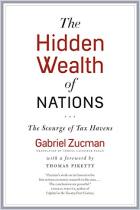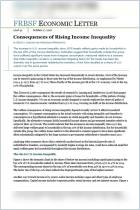Join getAbstract to access the summary!

Join getAbstract to access the summary!
Thomas Piketty, Emmanuel Saez and Gabriel Zucman
Economic Growth in the US
A Tale of Two Countries
Vox, 2017
What's inside?
Income inequality has essentially divided the United States in two.
Recommendation
Using a new set of metrics, economists Thomas Piketty, Emmanuel Saez and Gabriel Zucman show that income inequality in the United States is even worse than many people thought. With half the American population stagnating while others have soared up the economic ladder, it is little wonder that politics as usual has taken a beating. getAbstract recommends this eye-opening article to anyone interested in trends in US income inequality.
Summary
About the Authors
Thomas Piketty is a professor at the Paris School of Economics. Emmanuel Saez is a professor at the University of California, Berkeley. Gabriel Zucman is an assistant professor at the London School of Economics.































Comment on this summary